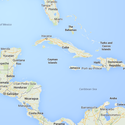-
About
- About Listly
- Community & Support
- Howto
- Chrome Extension
- Bookmarklet
- WordPress Plugin
- Listly Premium
- Privacy
- Terms
- DMCA Copyright
- © 2010-2025 Boomy Labs

 List Builder
List Builder
Listly by List Builder
Top Things to Do in Tallinn, Estonia, from a Cruise Ship - Feel free to add, vote or provide feedback to the list
Although the city power worked in the Town Hall until 1970, it still holds the role of a representational building of a city administration and welcomes visitors as a concert venue and a museum, where you can get to know the centuries-long historical and architectural value of the Tallinn Town Hall.
The Seaplane Harbour ( Estonian: Lennusadam) is a maritime museum in Tallinn, Estonia, opened in spring 2012. The museum is part of the Estonian Maritime Museum. The museum is located in the Tallinn aeroplane harbour in a building originally constructed as a hangar for seaplanes in the area of Peter the Great's Naval Fortress.
The Alexander Nevsky Cathedral is an orthodox cathedral in the Tallinn Old Town, Estonia. It was built to a design by Mikhail Preobrazhensky in a typical Russian Revival style between 1894 and 1900, during the period when the country was part of the Russian Empire.
St Mary's Cathedral, Tallinn ( Estonian: Toomkirik, full name: Tallinna Neitsi Maarja Piiskoplik Toomkirik, German: Ritter- und Domkirche, English: The Cathedral of Saint Mary the Virgin in Tallinn, also known as Dome Church) is a cathedral church located on Toompea Hill in Tallinn, Estonia.
Toompea Castle ( Estonian: Toompea loss) is a castle on Toompea hill in the central part of Tallinn, the capital of Estonia. The castle, an ancient stronghold site in use since at least the 9th century, today houses the Parliament of Estonia.
In origin, St Olaf's was part of the united western tradition of Christianity, whose polity continues in the Roman Catholic Church today. However, from the time of the Reformation the church has been part of the Lutheran tradition. Eventually proving surplus to the requirements of the Lutheran Church in Tallinn, St Olaf's became a Baptist church in 1950.
Kadriorg Palace ( Estonian: Kadrioru loss, German: Catherinethal) is a Petrine Baroque palace built for Catherine I of Russia by Peter the Great in Tallinn, Estonia. Both the Estonian and the German name for the palace means "Catherine's valley". It was built after the Great Northern War to Nicola Michetti's designs by Gaetano Chiaveri and Mikhail Zemtsov.
Rocca al Mare Shopping Centre ( Estonian: Rocca al Mare Kaubanduskeskus) is a shopping centre in Tallinn, Estonia. It's situated in the Haabersti District's subdistrict of Haabersti. Rocca al Mare is the largest shopping centre in Estonia, with a gross leasable area of 54,000 square metres (580,000 sq ft) containing nearly 170 different shops (including 14 restaurants and cafés), free of charge dressing room, and more than 1300 parking spaces.
The Estonian Open Air Museum ( Estonian: Eesti Vabaõhumuuseum) is a life-sized reconstruction of an 18th-century rural/fishing village, which comes complete with church, inn, schoolhouse, several mills, a fire station, twelve farmyards and net sheds. The site spans 79 hectares of land and contains 72 separate buildings and is located 8km to the west of Tallinn city center at Rocca al Mare.
The first wall around Tallinn was ordered to be constructed by Margaret Sambiria in 1265 and for that reason, it was known as the Margaret Wall. This wall was less than 5-metre-high (16 ft) and about 1.5-metre-thick (4.9 ft) at its base. Since that time it has been enlarged and strengthened.
The Art Museum of Estonia ( Estonian: Eesti Kunstimuuseum) was established in 1919. Originally based in Kadriorg Palace, the museum has expanded across several sites and today exhibits both international and local art works. At the end of the 1970s, in the 1980s the first branches of the Art Museum of Estonia were founded.
The Tallinn TV Tower ( Tallinna teletorn) is a free-standing structure with an observation deck, built to provide better telecommunication services for the 1980 Moscow Summer Olympics regatta event (see Sailing at the 1980 Summer Olympics). It is located near the suburb Pirita, six km north-east of the Tallinn city center.
Pirita occupies a relatively big area, but compared to other districts of Tallinn its population of 16,636 (as of1 Jan 2012) is relatively small. It mostly consists of private houses, instead of the large blocks of flats typical of some other districts of Tallinn, such as Lasnamäe and Mustamäe.
Kalamaja ( Estonian for Fish House; German: Fischermay) is a subdistrict of the district of Põhja-Tallinn (Northern Tallinn) in Tallinn, the capital of Estonia. It's located just northwest of the historical town centre, on the coast of the Tallinn Bay. Kalamaja has a population of 8,254 (As of 1 June 2011).
St. Catherine's Dominican Monastery, often simply St. Catherine's Monastery or the Dominican Monastery ( Estonian: Dominiiklaste Klooster), is a former monastery and one of the oldest buildings in Tallinn, the capital of Estonia. It is located in the heart of Tallinn's Old Town district full of warehouses and merchants' houses.
Estonian National Opera is the national opera company of Estonia. The company is based at the Estonia Theatre in Tallinn. The theatre has had several names throughout its existence. The latest one being "The Estonian National Opera", which was adopted in 1998.
From Wikipedia, the free encyclopedia Pirita Convent ( Estonian: Pirita klooster) was a monastery, for both monks and nuns dedicated to St. Brigitta, in the district of Pirita in Tallinn, Estonia. The idea of founding the monastery dates to merchants of Tallinn of around 1400.
The Russalka Memorial is a bronze monument sculpted by Amandus Adamson, erected on 7 September 1902 in Kadriorg, Tallinn, to mark the ninth anniversary of the sinking of the Russian warship Rusalka, or "Mermaid", which sank en route to Finland in 1893.
